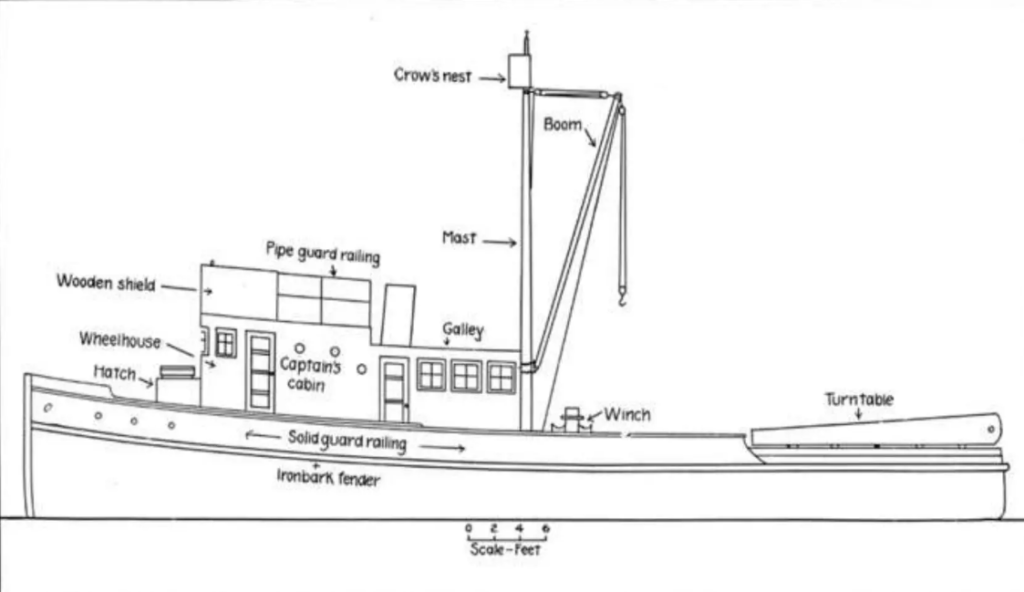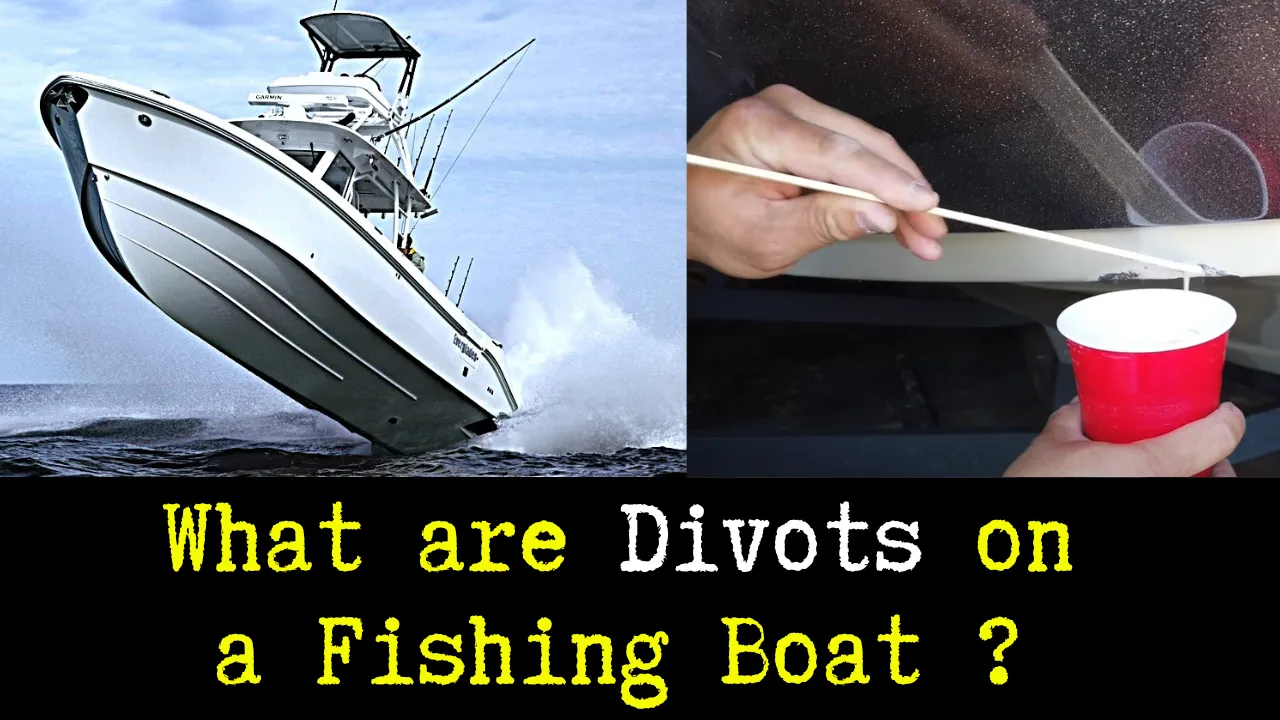On at least one fishing vessel you find incisions or imprints on the floor of the ship. These are called divots. Volts and divots are very informative when it comes to the usage and status of the boat. In this article I will let you know what divots are and the causes of their formation and in addition, their impact in fishing activities.

Understanding Divots
Divots are small depressions or dents on the boat’s deck or surface. They can vary in size and depth. Most divots are formed due to regular wear and tear. Sometimes, they are caused by heavy objects being dropped or dragged across the boat. On fishing boats, these marks are common due to the nature of the activities involved.
Causes of Divots
- Heavy Equipment: Much equipment such as coolers, tackle boxes, fishing rods, among others are usually transported by the fishing boats. Some of these items include; When these items are shifted from one place to another or even fallen accidentally they tend to make depressions on the deck.
- Anchors and Weights: Dropping anchors or weights on the boat can cause significant divots. These items are heavy and have pointed edges, which can dig into the deck material.
- Foot Traffic: Constant walking and movement on the boat, especially when wearing heavy boots, can cause small divots over time. This is more common on boats with softer decking materials.
- Fishing Activities: Activities such as casting nets, handling fish, and using gaffs or hooks can also lead to divots. The repeated action of pulling and dragging can wear down the deck surface.
Materials and Divots
With regard to the decks, different boats employ different materials. Whether the material is high friction or low friction it can contribute to divoting.
- Fiberglass: Fiberglass decks are quite strong and rigid however they are not immune to cracking and sinking into divots after a huge pressure or cutting edge impact. They take less time for repair as compared to other materials that is one of the guiding factors for their use.
- Wood: Wooden decks are more prone to divots, especially if not properly maintained. Water damage and rot can make the wood soft, leading to more frequent and deeper divots.
- Aluminum: Aluminum decks are strong and resistant to divots. However, they can still get dents from heavy impacts.
Impact of Divots on Fishing
Although divots are small they might interfere with your fishing game, and on that note they are a real thing.
- Safety: Divots can cause one to trip. The floor is somewhat slippery and uneven since the gaps between the boards follow the structure of the wood grain on the other side.
- Comfort: Making a move from one place to another on a deck that has many divots is rather uncomfortable. It can impact on your equilibrium and this makes it difficult for you to stand or even walk.
- Equipment Damage: Divots can damage fishing gear. For example, reels and rods can get scratched or broken if they get caught in a divot.
- Aesthetics: A deck full of divots can make the boat look old and poorly maintained. This can affect the boat’s resale value.
Preventing Divots
The following are some of the means through which divots on a fishing boat can either be avoided or their formation reduced:
- Use Deck Mats: Beneath Jogging and rolling: If mats are placed in areas where several people walked or rolled, then the deck will be safe from withstanding heavy impacts.
- Proper Storage: Abandon heavy equipment and fishing gears to avoid them shift or fall off during the process. Seating and reclining equipment shall include storage compartments, and tie-down equipment.
- Regular Maintenance: Inspect the deck regularly for any signs of damage. Repair small divots before they become bigger problems.
- Use Soft Shoes: Suggest to avoid referencing hard-soled shoes on the boat. As a result, the landing pressure is eased on the deck minimizing the formation of divots.


Repairing Divots
If the boat you are using already has divots, there must be a technique on how these divots can be fixed.
- Fiberglass Repair Kits: That is repairing kit must be used when filling the divots on fiberglass decks. The instructions need to be read and adhered to as a way of ensuring a proper completion of the project.
- Wood Fillers: For wooden decks, use wood filler to patch the divots. Sand the area smooth and apply a protective sealant.
- Metal Patching: For aluminum decks, use metal patching compounds to fill the dents. Ensure the patch is even with the deck surface.
What are divots on a fishing boat used for?
Divots on a fishing boat are used for:
- Holding items: They are useful in preventing small items such as fishing equipment or bait boxes from moving all over the boat.
- Drainage: They can help in drainage of water, there will not be standing water on the deck.
- Structural integrity: They can enhance the boat’s structural design by distributing stress.
What are divots on a fishing boat in India?
In India, divots on a fishing boat serve similar purposes as elsewhere:
- Holding fishing gear: Securing items to prevent them from moving.
- Water drainage: Facilitating the removal of water from the deck.
- Improving boat design: Enhancing the overall structure and stability of the boat.
What are divots on a fishing boat explain?
Divots on a fishing boat are explained as small indentations or recessed areas designed to hold items securely, assist in water drainage, and contribute to the boat’s structural integrity. These divots are strategically placed to enhance the boat’s functionality and safety.
What are divots on a fishing boat called?
Space on a fishing boat that could be described as an area with less volume is known as a recess or indentation. They may also be referred to as deck drains or scuppers where they are created principal functions include the draining of water.

Important Parts of a Fishing Boat
- Hull: The hull and the part of the boat that the engine is situated in.
- Deck: The flat surface on top of the hull where you stand.
- Cockpit: The area where the controls and seating are located.
- Transom: The flat back part of the hull.
- Bow: The front part of the boat.
- Stern: The rear part of the boat.
- Keel: The lowest structure within the hull of a boat as well as affording buoyancy and support.
- Rudder: Used for steering.
- Anchor: Used to moor the boat in place.
- Livewell: A tank for keeping live bait and fish.
Final words
Holes on a fishing boat are expected but can easily be dealt with. Know what they are and how you can get them can enable you to avoid them and repair processes in case you get involved in them. In more detail, any flaws and problems can be solved, and maintaining your boat deck in good condition can result in safer and more enjoyable fishing. For the experienced fisherman or the first time fishermen, the following are a number of things to look at with a view of improving their time on the water.
FAQ:
What are the parts of the fishing boat?
The parts of a fishing boat include the hull, deck, cockpit, transom, bow, stern, keel, rudder, anchor, and livewell.
What are the holes on the side of my boat for?
Some of the holes on the side of your boat, those that are often referred to as scuppers are meant for the boat’s drainage system. It permits the water to drain through the deck and does not create pools.
What is the top part of a fishing boat called?
The upper or main of a fishing boat is usually referred to as the deck.
What is a group of fishing boats called?
A set of fishing boats is known as fleet.

